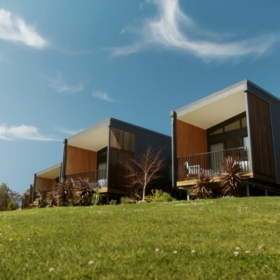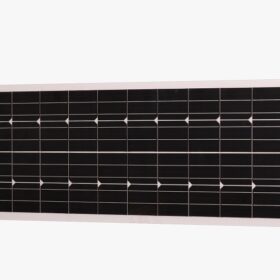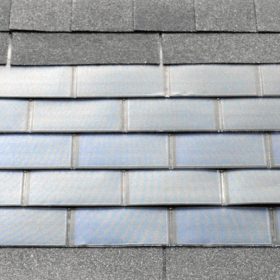BIPV for prefab net-zero housing trials in Australia
ClearVue Technologies, an Australia-based supplier of smart building materials, is providing a combination of its building-integrated photovoltaic (BIPV) technology and solar cladding panels in a prefabricated house trial trial.
Platio debuts new walkable solar panels
The Hungarian company said its new products can handle a load of 300 kg. The modules are available with power outputs of 23.65 W and 59.68 W and can be integrated with wood-plastic composite, wood, stone, or ceramic floorings.
Paxos Solar unveils glass-glass PV tile with heat pump integration
Paxos Solar has developed a new glass-glass PV tile that integrates with heat pumps, featuring Longi’s back-contact solar cells. The 44 W, 59.5 cm x 48 cm tile can also produce heat for residential systems.
Lightweight ventilated BIPV system for low-load rooftop applications
Scientists in China have designed a ventilated building-integrated photovoltaic system that relies on flexible solar modules with a weight of 6 kg/m2. The system also uses an airflow channel under the PV panels to reduce their operating temperature and increase their power yield.
Brazilian manufacturer unveils 1 kg BIPV module
Eternit S.A., a Brazilian construction materials supplier, says it has developed a 50 W panel for building-integrated PV (BIPV) applications. The 1 kg module features monocrystalline passivated emitter and rear cell (PERC) tech.
Building-integrated PV in the Netherlands
The latest report from the International Energy Agency Photovoltaic Power Systems Programme (IEA-PVPS) says that building-integrated photovoltaics (BIPV) could be key to help decarbonize cities in the Netherlands, but it warns that the needs of the solar and construction sector must be bridged.
ClearVue integrated solar window tech cracks Middle East construction market
Smart building materials company ClearVue Technologies has cracked the Middle East and Indian construction markets after signing a five-year agreement with Qatar’s largest glass and façade manufacturer.
Semi-transparent PV window based on passive radiative cooling coating
Scientists have manufactured and analyzed a novel coating for semi-transparent photovoltaic glazing that reportedly offers remarkable energy yield and a low heat gain rate. Through outdoor experiments, the researchers also found the glazing also provides satisfactory high-quality indoor lighting conditions.
SolReina’s patented solar window wins best protected invention award in Spain
The windows, composed of glass-glass BIPV panels with thermal and acoustic insulation, are designed for use on building exteriors. They can generate between 150 and 225 W/m2. While currently manufactured and marketed in Spain, they may soon be available in Germany.
Dynamic modeling for building-integrated photovoltaic-thermal systems
Researchers in the Middle East have conducted a series of simulations to assess the technical and economical feasibility of building-integrated photovoltaic-thermal systems. The proposed framework could apply to various building types and geographical locations.










